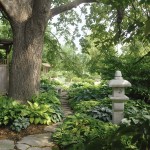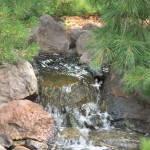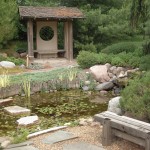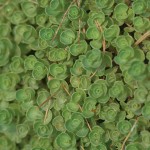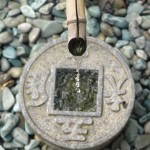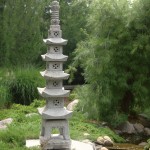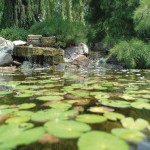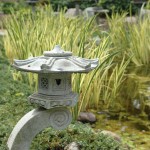
Written by Elvin McDonald
Photos by Duane Tinkey
[dropcap]F[/dropcap]or nearly 60 years, I have scoured the globe for gardens to publish. When I surveyed the private gardens I had chosen for my latest book, I realized that not one illustrated Japanese style. Fortunately, there was no need to board an airplane. I had a wonderful example up my sleeve—or rather, just down the road, on a farm outside Indianola.
When I was young and impressionable, an editor I respected set forth this dictum: “A Japanese lantern doth not a Japanese garden make.” Since then, I’ve been cautious with my definitions, but I have no doubt about Alan and Helene Magruder’s garden. Alan, a former Simpson College professor, and Helene, one of the few women anywhere knowledgeable enough to earn the title “Bonsai Master,” decided to learn about Japanese landscape style, and fell in love with it as they traveled and researched the topic. They saw, as well, that the style’s classic features could be credibly expressed on their property.
“Originally, there was a riding area east of the house and north of the barn,” Alan says. “We decided to turn it into a place where we could display Helene’s bonsai. We incorporated the three primary elements of a Japanese garden—stones, water and plants—arranged to invite strolling.”
“This peaceful, refreshing garden seems centuries old. Visitors are amazed, then, when the Magruders casually mention that they laid it out on a former horse-riding area north of their barn.”
A flagstone path now leads those strollers through the transformed riding area. At its entry, simple wooden gates contain a diamond-shaped cutout to offer a sneak preview. Just past these gates lies a space with several bonsai trees on stands to the left and a pond to the right. At the far end of the pond, a waterfall cascades beneath an impressive trio of weeping evergreen trees the Magruders call “the three dragons.” A stone pagoda peeks out from behind them.
The pond is edged with stones and a lush blanket of blue rug junipers. While circling it, visitors encounter more bonsai trees on stands, in a gravel bed next to a large Japanese water jar. Next appears a berm containing conifers—threadleaf cypress, prostrate junipers, a large weeping hemlock and mugo pines. This green swath introduces a little open structure Alan built beneath a tall white pine and a Chinese pine. It catches cool breezes and overlooks a bamboo dripper trickling water into a stone basin.
The path continues, lined on one side with tall grasses. It leads to a weeping willow and a small secret garden partially screened by Amur maples. Farther on, up a short flight of steps, a hosta garden enjoys the shade of an ancient linden tree. (Although hostas flourish in many Iowa gardens and claim a long-established local society of enthusiasts, they are in fact native to Eastern Asia.)
The last pleasure along the flagstone path is another gathering of specimen bonsais, enclosed by a cedar wall. A pergola shades the tender miniatures, and a nearby deck incorporates a growing bench. A stone patio has been sited to give visitors their final, overall view.
Because of its ample size, intelligently selected plantings and disciplined maintenance, I’m comfortable calling this garden the best of its kind in America. Perhaps the most surprising aspect of the Magruders’ loyal commitment to Japanese style is the way it started: One day, Helene came across a lonely bonsai for sale at the supermarket and brought it home. In chorus, the couple say, “Bonsai changed our lives.”
Elvin McDonald has served as garden editor of House Beautiful, Traditional Home and Better Homes and Gardens. He’s also authored or been editor-in-chief of more than 70 books. After working for five years as Friends Director at the Des Moines Botanical & Environmental Center in Des Moines, he’s been named botanical educator and ambassador for the new Greater Des Moines Botanical Garden. His career highlight? “The time I spent as a primary consultant for the Emmy Award-winning PBS series, ‘Gardens of the World With Audrey Hepburn.’”


